10 International Breakfasts Healthier Than Yours
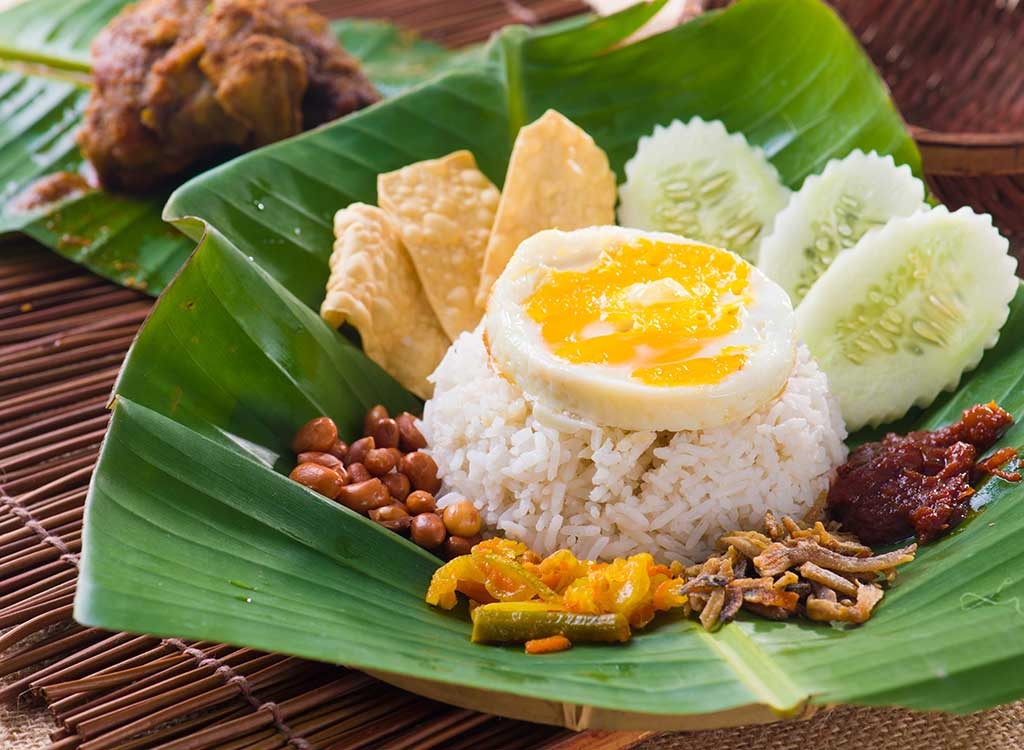
Here’s the thing about why breakfast is so important: After 6+ hours or sleep, your body is starved of nutrients and needs an injection to fire up its metabolism and return to full operating capacity. Unfortunately, too many Americans feed it nothing but sugar-soaked cereals, juice, or bacon-egg-n-cheeses, ensuring a day of limited productivity (and possibly a lifetime of cholesterol issues).
Other countries may not have our amber waves of grain, but many do offer a healthier breakfast blueprint. Take inspiration from these 10 international breakfasts that contain both the nutrients you need and deliciousness par excellence. None of these is 100 percent perfect—but most likely a lot healthier than yours. Check ’em out and then find out The 30 Best Breakfast Habits to Drop 5 Pounds!
Turkey
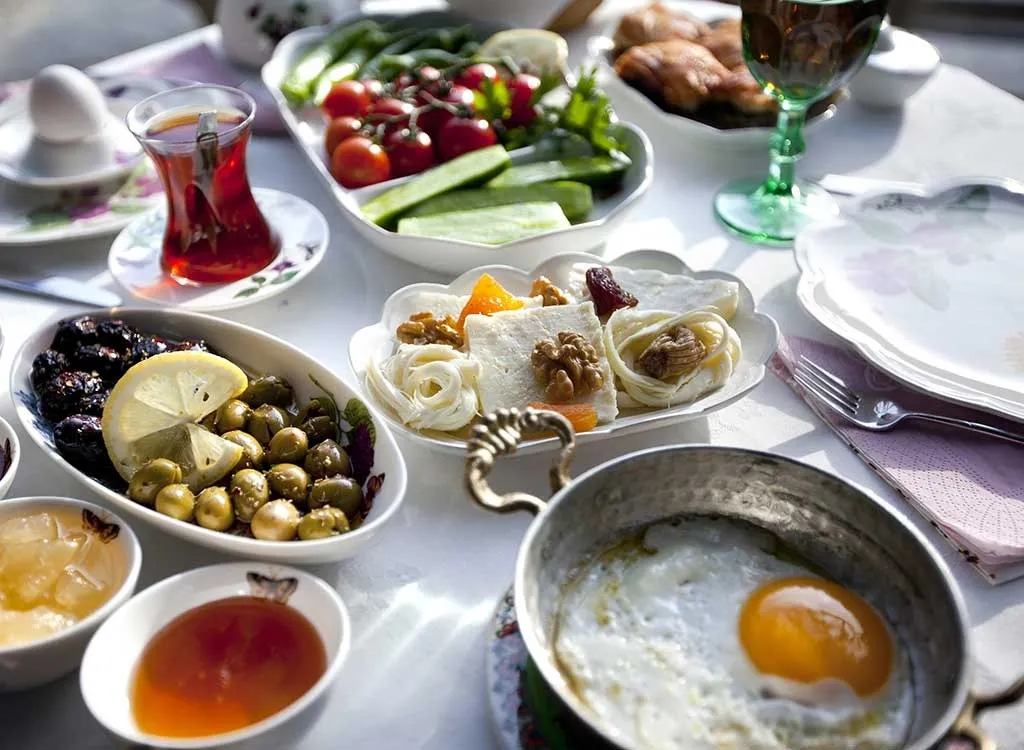
It’s difficult not to find fans of the typical Turkish breakfast among nutritionists and gourmands alike. The impressive spread of meze-style dishes starts with olives, tomato, white cheese, parsley (squeezed with lemon) and moves on to eggs, honey, cubanelle peppers, cucumbers, garlic sausage, and savory pastries. The olives are a particularly good source of heart-healthy monounsaturated fat while the ever-present tea is loaded with antioxidant catechins. And you all know how much we love tea around here, what with our The 7-Day Flat-Belly Tea Cleanse and all.
Israel
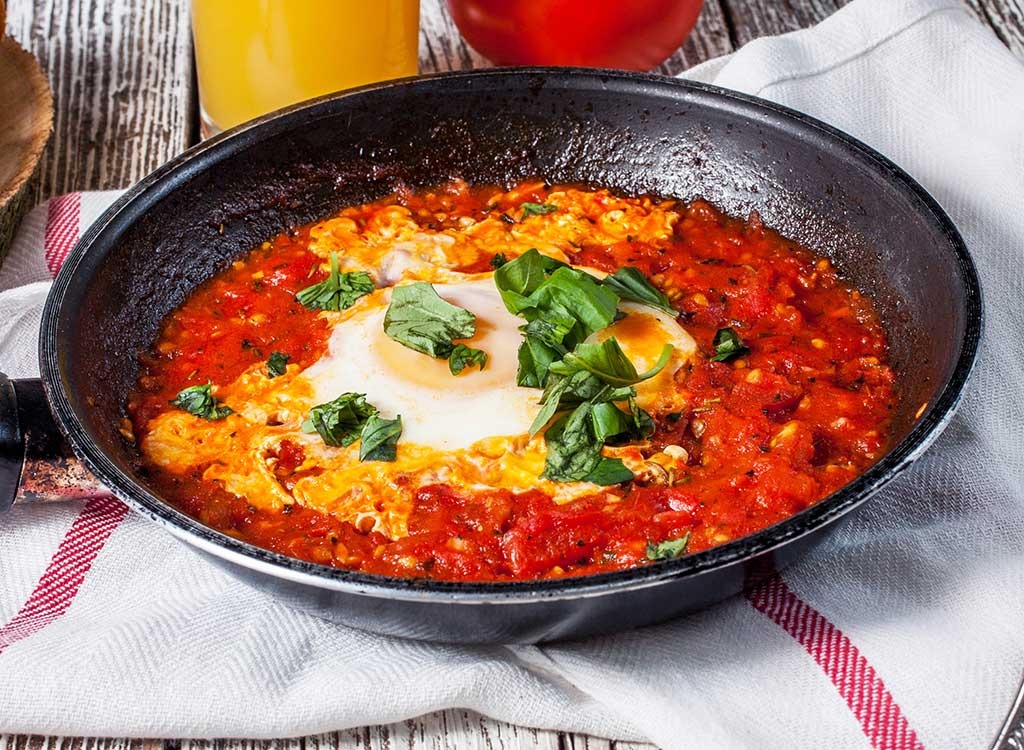
The centerpiece of any good Israeli breakfast is Shakshouka, eggs poached in a tomato and vegetable sauce, best taken alongside salat katzutz—a finely chopped vegetable salad with tomatoes, red onion, parsley, cilantro, cucumbers, and red or green peppers. Like the Turkish breakfast, cheese (especially Tsfatit), olives, and yogurt are common, making the meal low in saturated fat and high in monounsaturated fat, dietary fibers, calcium, riboflavin, and phosphorus. If you love creative egg dishes, don’t miss these 25 Best Egg Recipes for Weight Loss.
Japan
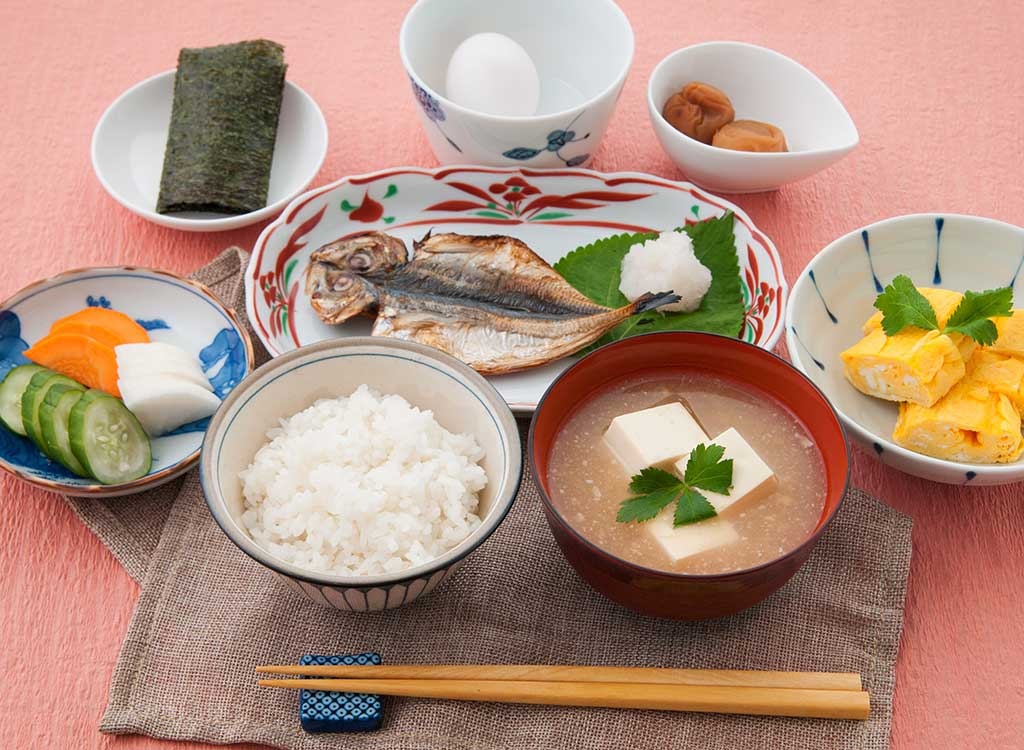
Breakfast in Japan eschews most Western ingredients in favor of steamed rice (or okayu rice porridge), tofu, pickled vegetables, fermented soy beans, dried seaweed, and of course, fish. If any eggs join the spread, they are elegantly rolled into a tamagoyaki omelet. Altogether, it’s extremely low in sugar, and high in goodies like manganese, magnesium, selenium, potassium, and vitamin A. The accompanying green tea adds antioxidants.
Vietnam
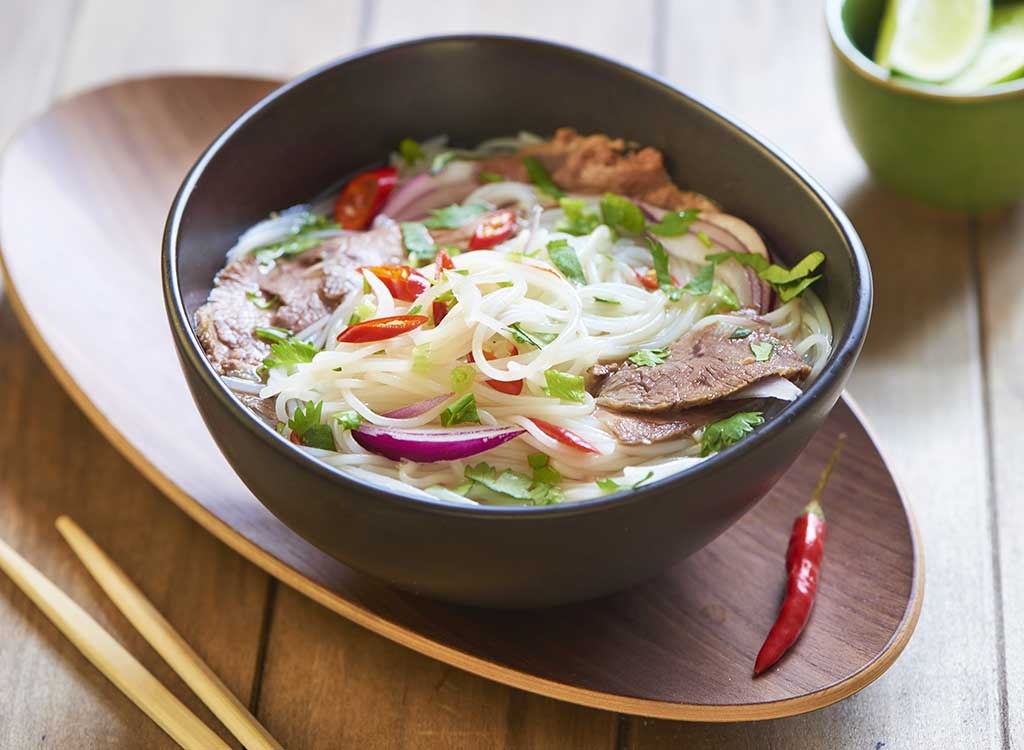
A steaming bowl of breakfast Pho usually comes stuffed with a huge variety of vegetables and herbs—cilantro, bean sprouts, mint, spring onion, lime, roasted peanuts, chili, among others. The bone broth also packs perks for your gut, where the gelatin can help seal holes in the intestines. Be warned that not all versions are created equal, and some contain unhealthy amounts of sodium—so it may be best leave most of it in the bowl. Curious about bone broth? Try a K-cup to get bone broth from your Keurig!
Egypt
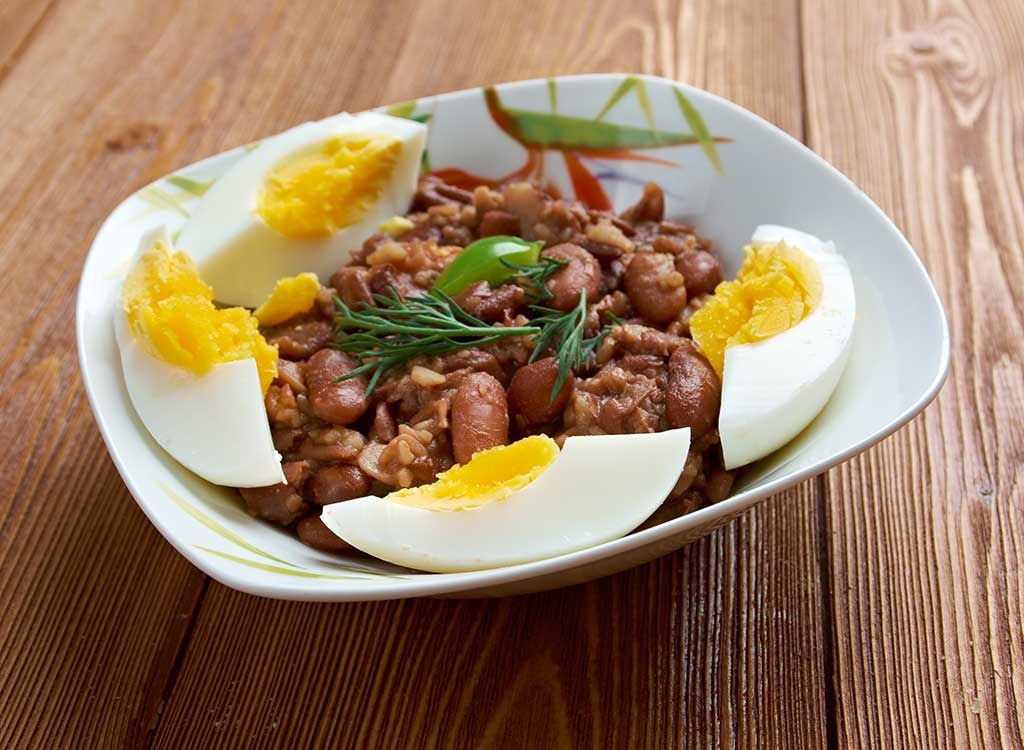
The traditional Egyptian breakfast and national dish, Fūl Medames, is thought to date to the time of the pharaohs. The main ingredient, fava beans, are usually stewed overnight and then spiced with cumin, chopped parsley, garlic, onion, lemon juice, and chili pepper. Chopped hard boiled eggs are sometimes added, too. The body benefits just as much as the taste buds, with very low saturated fat, no cholesterol, and lots of fiber, iron, manganese, magnesium, and phosphorus.
Costa Rica
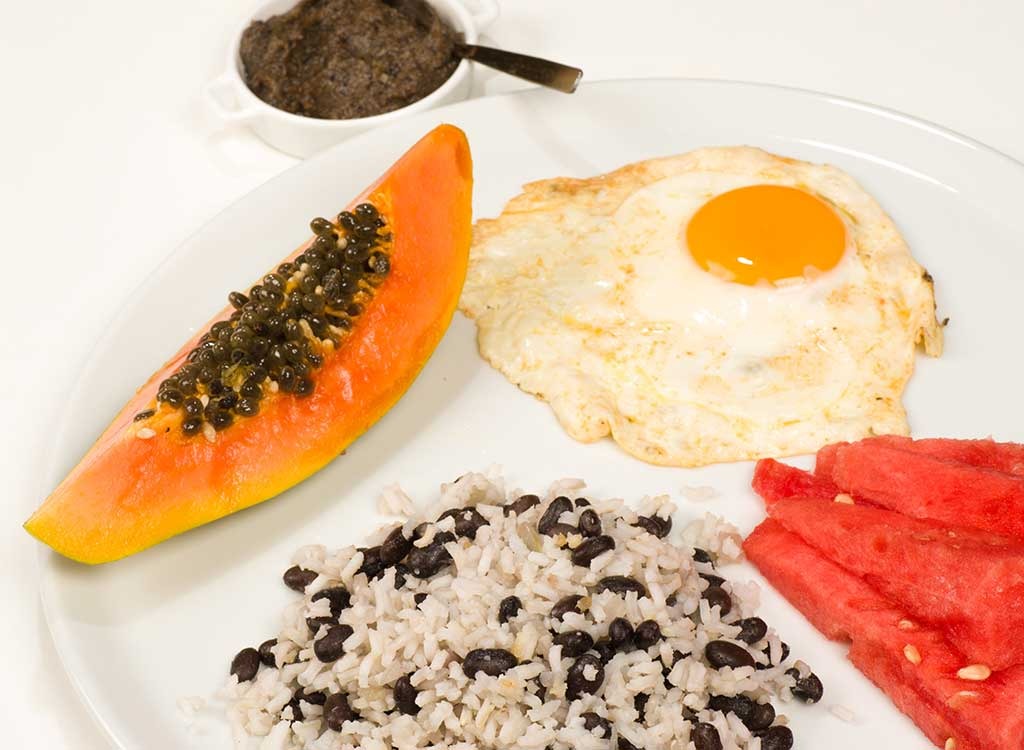
Black beans—and the heavy amounts of iron, zinc, potassium, thiamin, and folate inside—play a central role in breakfast here. Mixed with rice, spiced with cumin, pepper, and garlic, Gallo Pinto often comes with eggs on the side and a host of vitamin-rich tropical fruits like mango, pineapple, papaya, and plantains. The breakfast might have a lot to do with Costa Rica’s “Blue Zone” designation, given to countries with long-living populations. Speaking of what to eat as you age, don’t miss these 25 Foods People Over 45 Should Eat!
Iceland
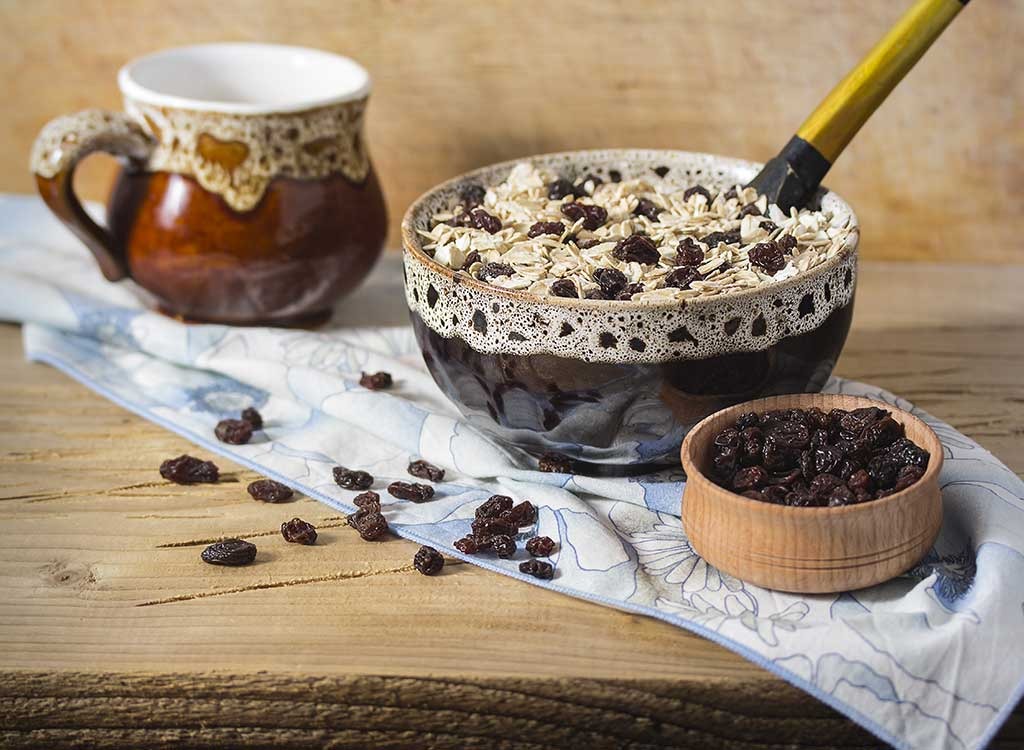
Icelandic cuisine may not inspire much salivation, but its breakfast is one of the healthiest—and perfect for fending off dark, icy mornings. Hafragrautur, an oatmeal porridge, is is cooked in water or milk before being sprinkled with brown sugar, raisins, and melon seeds; this makes it low in cholesterol and sodium and high in dietary fiber, manganese, and selenium. Add in a shot of omega 3-rich cod liver oil and a few spoonfuls of protein-packed skyr, the semi-tart Icelandic version of Greek yogurt, and you’re ready to get shoveling. Love oats? Then don’t miss these 50 Best Overnight Oats Recipes!
Russia
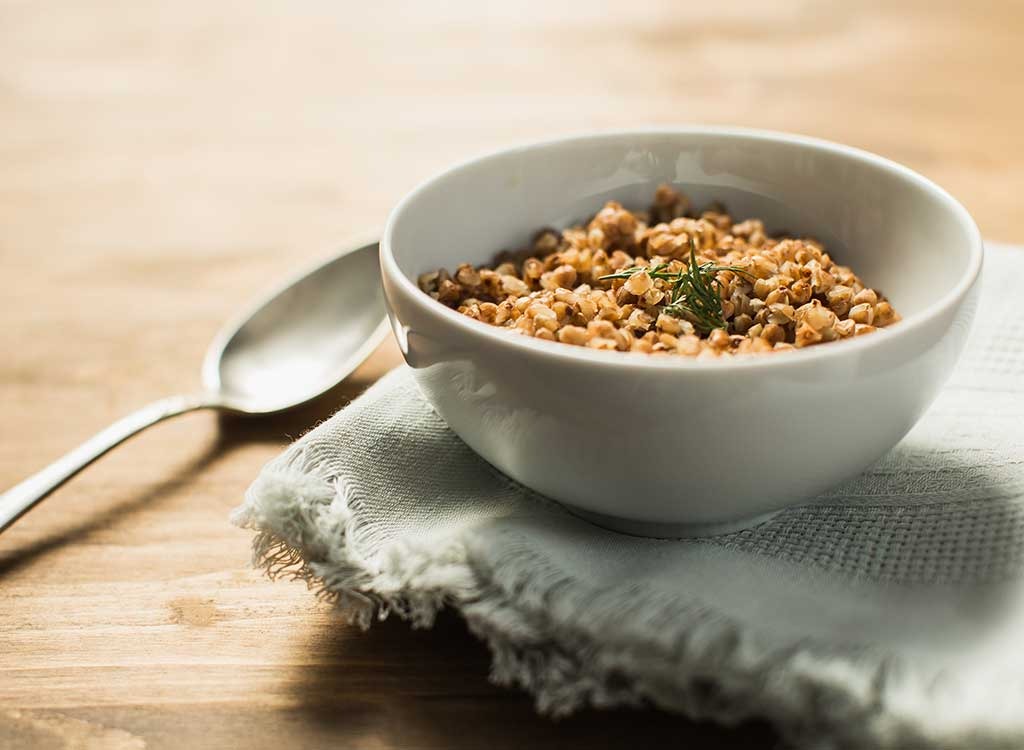
Kasha may be all the rage in American health food stores today, but it’s been on tables in Russia for far longer, primarily at breakfast, as a warm porridge made from oats, millet, buckwheat, or semolina. Cooked in milk to give it extra creaminess, it’s topped with butter, spices, dried fruits, or jam. Very low in saturated fat, cholesterol, and sodium, the porridge is an excellent source of dietary fiber and magnesium, and manganese. The buckwheat version is particularly good at lowering high blood pressure, thanks to the rich supply of flavonoids.
Malaysia
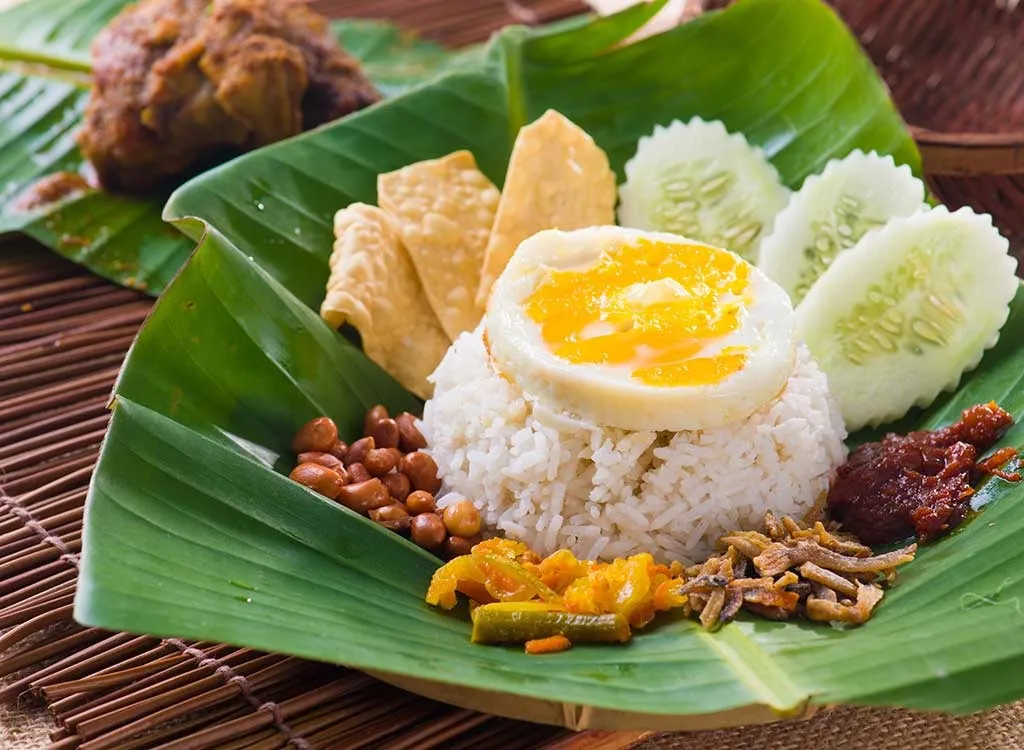
Breakfast is perhaps the best excuse to dive into supremely delicious Nasi Lemak. Soaked and cooked in coconut milk, rice is garnished with anchovies, cucumbers, roasted peanuts, hard boiled egg, and spicy sambal sauce. It’s traditionally wrapped in a banana leaf, but that’s just a renewable place setting. Yes, there’s a bit more fat than is good for you (eat less rice to reduce), but it’s balanced with lots of manganese, protein, and carbs. The chili in the sambal also boosts the metabolism (depending which nutritionist you talk to).
India
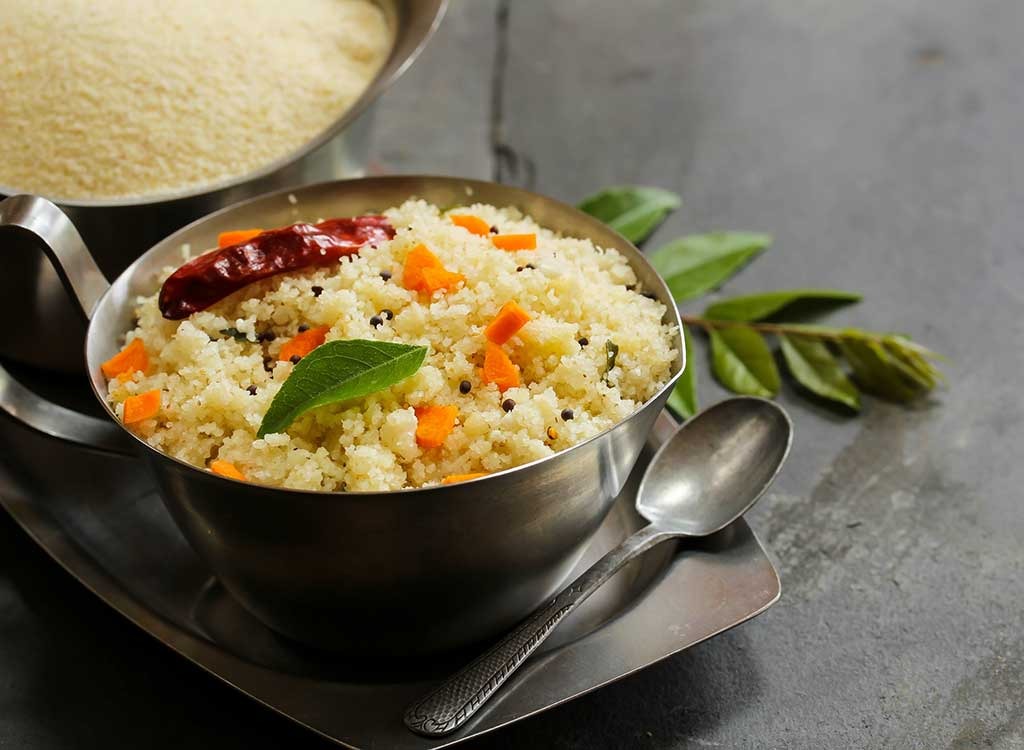
The subcontinent’s widespread embrace of vegetarianism means a breakfast healthier than most. In the south, Upma, a thick concoction made from dry roasted semolina is popular. The succulent savory flavor infused by the cumin, green chilies, cilantro, and turmeric also contains a range of nutrients. Turmeric in particularly has powerful anti-inflammatory properties. You’ll also benefit from a high dose of selenium, folate, and thiamin, plus the protein and vitamin E and B in the whole grains.